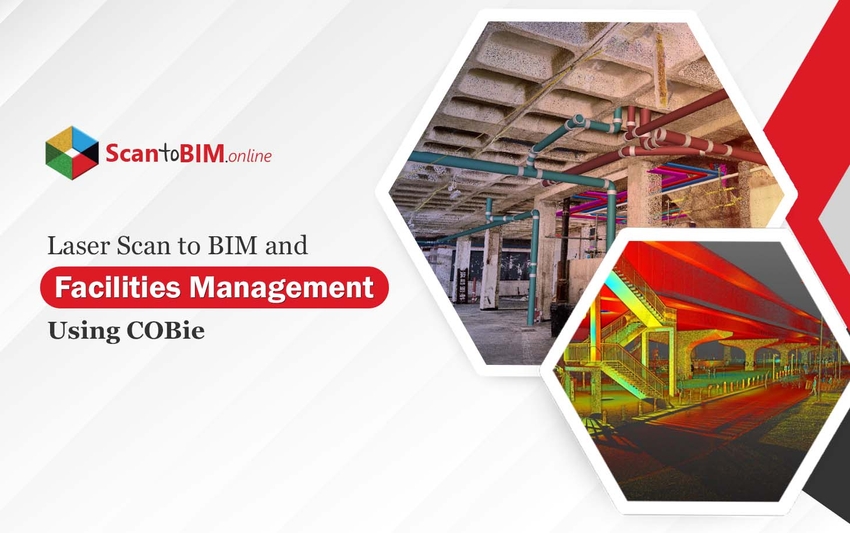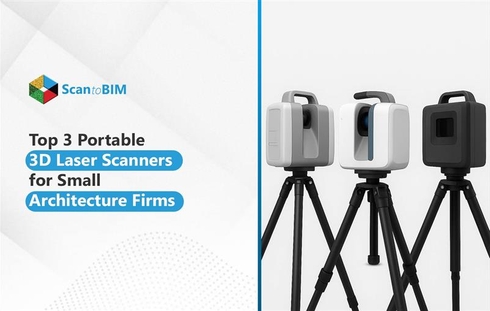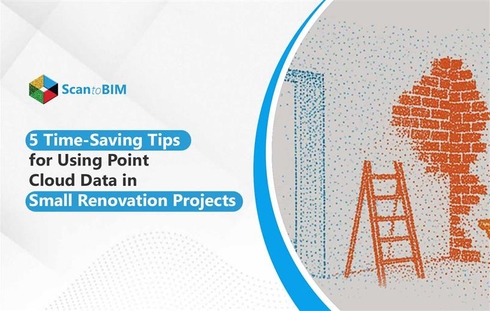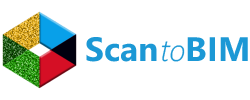
Facilities management often struggles with accessing accurate, up-to-date information about building assets and their locations. The challenge grows with project scale and complexity. Without a structured data format, asset tracking, maintenance scheduling, and lifecycle planning become inefficient and costly. This is where COBie (Construction-Operations Building Information Exchange) offers a game-changing solution. Integrated with 3D Laser Scan to BIM Modeling Services, COBie enables streamlined data delivery from design through operations. By leveraging Laser Scan to BIM Services, stakeholders can transform raw scan data into actionable, organized information, making 3D Laser Scan to BIM a powerful asset for facilities management.
What is Laser Scan to BIM?
Laser Scan to BIM is a process that converts 3D laser scan data of existing buildings or structures into accurate Building Information Models (BIM). Using high-resolution point clouds captured through laser scanners, BIM experts create intelligent 3D models that reflect real-world conditions. These models support renovation, facility management, and clash detection with precise as-built documentation. 3D Laser Scan to BIM Modeling Services are especially valuable for complex or historical structures where original drawings are unavailable or outdated. By adopting Laser Scan to BIM Services, AEC professionals gain a reliable foundation for design, analysis, and long-term operational efficiency.
What is Cobie and Why Does It Matter?
Construction-Operations Building Information Exchange (COBie) is a structured format used to capture and deliver essential non-graphical data throughout a building’s lifecycle. Unlike traditional paper-based handovers, COBie provides a digital and standardized way to share key asset information, enabling efficient operations, maintenance, and facilities management.
A typical COBie file includes:
- Equipment lists
- Spare parts and warranties
- Maintenance schedules
- Product data sheets
- Point of origin details
- Specifications, drawings, and Bills of Quantities (BOQ)
This information is delivered in a spreadsheet format and can be integrated with facility management systems for real-time updates and access.
COBie is a subset of the Industry Foundation Classes (IFC), designed specifically for operations and maintenance (O&M). It focuses on two primary asset types:
- Equipment: Mechanical, electrical, plumbing, and other physical systems
- Spaces: Rooms, zones, or defined areas within a facility
Despite its technical nature, COBie enables system-to-system data exchange with minimal user input. It’s not intended for end-users but empowers facility managers to answer two critical questions:
- What is the asset?
- Where is the asset located?
At ScantoBIM.Online, we provide COBie deliverables as part of our 3D Laser Scan to BIM Modeling Services. By integrating COBie with Laser Scan to BIM Services, facility managers receive not just accurate models but also structured data that enhances asset lifecycle performance. This powerful combination of 3D Laser Scan to BIM and COBie ensures smarter, more cost-effective building operations in the USA.
How Scan to BIM and COBie Work Together
Integrating COBie into your Scan to BIM workflow enhances the value of as-built models by adding structured, actionable asset data. With Laser Scan to BIM Services, point cloud data is first converted into intelligent 3D models. These models are then enriched with COBie data, making it easier to collate and hand over complete, contractually required information to building owners.
Here's how Scan to BIM and COBie complement each other:
- 3D Laser Scan to BIM captures accurate existing conditions
- BIM models provide the framework for integrating COBie datasets
- COBie standardizes asset information, enabling streamlined facility management
- Owners can access all asset data digitally, from design to operations
Traditionally, the workflow involved converting the point cloud to BIM, then exporting COBie. However, emerging research suggests a more direct path:
- COBie focuses on asset identity and spatial relationships, not geometry
- New studies indicate it may be possible to generate COBie directly from laser scans
- This eliminates repetitive BIM reconstruction tasks
- Proposed workflows highlight direct point cloud-to-COBie extraction, advancing laser scanning technology
While still under development, this evolution in 3D Laser Scan to BIM Modeling Services could significantly reduce project time and costs, making data handovers faster, more efficient, and more reliable for facilities management.
Benefits of COBie Integrated with Scan to BIM for Facilities Management
Efficient facilities management depends on having timely, accurate, and structured information about a building’s assets. However, exchanging data between architects, contractors, and facility managers can become time-consuming and expensive if not properly managed. COBie helps eliminate this inefficiency by providing a standardized, digital format for sharing non-graphical asset data across all stakeholders.
Here’s how COBie benefits facilities management, especially when combined with Laser Scan to BIM Services:
Streamlined Information Exchange
- Reduces the time and effort required to gather asset data manually
- Minimizes miscommunication and data duplication across teams
- Ensures data is always available in a structured, easy-to-use format
Lower Data Management Costs
- Simplifies asset tracking and maintenance scheduling
- Reduces the need for repeated surveys or manual inspections
- Makes long-term building operations more cost-effective
Improved Lifecycle Visibility
- COBie, when integrated with 3D Laser Scan to BIM, gives owners access to asset data from design to operation
- Facility managers can plan maintenance, manage warranties, and track asset status using COBie-enabled tools
Growing Industry Adoption
- More software platforms now support COBie workflows
- Easy integration with CMMS and FM platforms enhances usability
Future-Ready Workflows
- Ongoing research is exploring how COBie data can be extracted directly from point clouds
- This would eliminate the need for intermediate BIM models, making 3D Laser Scan to BIM Modeling Services even more efficient
- Faster, more automated data generation will drive smarter and leaner facility operations
COBie, paired with Laser Scan to BIM, is not just a handover tool, it’s a strategic asset that drives smarter building management and long-term value.
Challenges and Solutions in Implementing Scan to BIM with COBie
Implementing Scan to BIM Services along with COBie integration can greatly enhance facilities management, but not without its share of technical and operational challenges.
Here’s a look at common difficulties and ways to overcome them:
Challenge 1: Unstructured Data from Laser Scans
Raw point cloud data is dense and unorganized, making it difficult to extract usable asset information.
- Solution: With 3D Laser Scan to BIM Modeling Services, point clouds are converted into accurate, parametric BIM models. These models provide a structured foundation for embedding COBie data.
Challenge 2: Manual Data Entry into COBie Files
Populating COBie spreadsheets manually is time-consuming and prone to human error.
- Solution: Automated COBie data extraction tools can streamline the process by pulling relevant information directly from the BIM model, reducing errors and saving time.
Challenge 3: Difficulty in Aligning COBie with FM Systems
Integrating COBie data with existing CMMS or FM platforms can be complex.
- Solution: Using IFC-compliant workflows ensures that COBie outputs are compatible with most modern facility management systems, enabling seamless data transfer and utility.
Challenge 4: High Cost and Time for BIM Reconstruction
Creating a full BIM model solely for COBie integration may feel redundant.
- Solution: Emerging research in 3D Laser Scan to BIM is exploring direct COBie data extraction from point clouds, potentially eliminating the need for full model reconstruction in the near future.
When to Use Scan to BIM + COBie
Combining Laser Scan to BIM Services with COBie integration is most effective when precise as-built data and structured asset information are essential for facility operations. This powerful combination supports efficient decision-making, lifecycle planning, and digital handover.
Here are key scenarios where using 3D BIM Modeling Services and COBie is highly recommended:
Renovation or Retrofit Projects
- Existing buildings often lack updated documentation
- 3D Laser Scan to BIM captures accurate as-is conditions
- COBie organizes asset data for planning, budgeting, and execution
Facility Handover & Commissioning
- Owners require complete digital records post-construction
- COBie provides structured data (equipment lists, warranties, manuals)
- BIM model delivers spatial and visual clarity
Operations & Maintenance (O&M)
- Facility managers benefit from centralized data access
- Integration with CMMS becomes seamless using COBie
- Enables preventive maintenance and cost control
Asset-Intensive Facilities (hospitals, airports, plants)
- High volume of equipment and systems
- 3D Laser Scan to BIM Modeling Services ensure accuracy
- COBie enhances asset tracking and maintenance planning
When you need reliable spatial data and organized asset documentation, Scan to BIM with COBie is the solution that ensures long-term operational success.
Conclusion
The integration of Laser Scan to BIM Services with COBie is transforming how facilities are managed, maintained, and optimized. By converting raw point cloud data into intelligent 3D models and structured asset information, AEC professionals and facility managers gain complete visibility and control across the building lifecycle. Whether it’s for renovation, handover, or long-term maintenance, combining 3D Laser Scan to BIM with COBie ensures data accuracy, operational efficiency, and reduced lifecycle costs. As technology advances, even direct extraction of COBie from point clouds is becoming a promising reality, further streamlining workflows.
Explore our expert 3D Laser Scan to BIM Modeling Services at ScantoBIM.Online, and take control of your building’s future.








